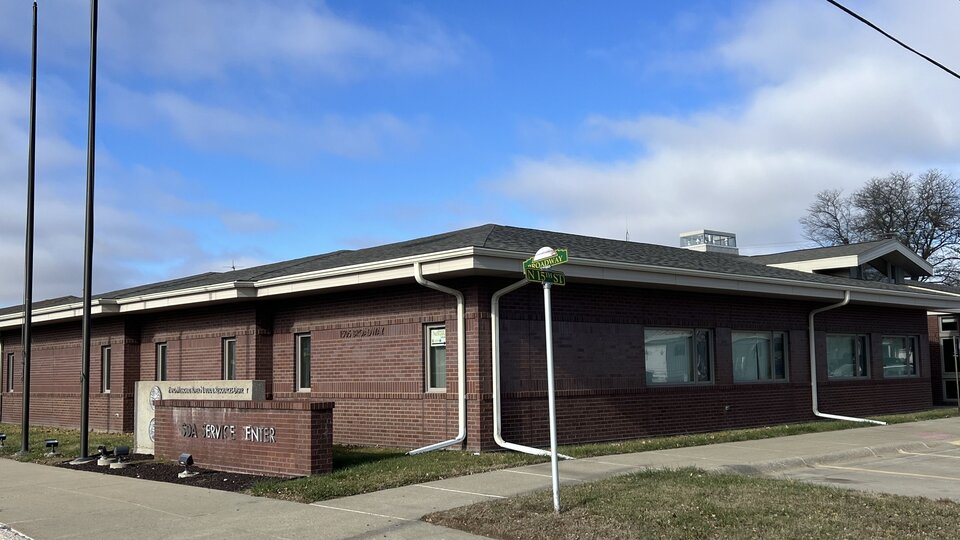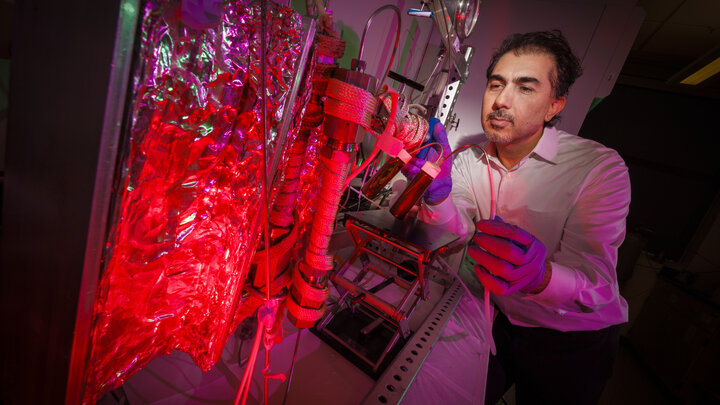Our website is under construction! If you are having trouble accessing for finding information, call 402-987-2140 and ask for Tammy!
A simple act of kindness can spark a ripple of good—and you can be the spark! Beginning on October 9 and leading up to the release of Wicked: For Good on November 21, we’re celebrating the power of young people and communities everywhere to make a difference by putting their heart and hands together to create a wave of kindness.
Just like Elphaba and Glinda in Wicked: For Good, your choices can change the world. This challenge is open to everyone—youth, families, schools, workplaces, and community groups—and it’s your chance to show how one good deed can inspire another.
How to Get Involved?
Join the “For Good Challenge” with Wicked: For Good and 4-H and be part of a movement to create a kinder world in your school, workplace, or community.
How to join the #4HForGood Challenge:
1) Do Something Good: Big or small, every act counts! Help out, give back, or simply show someone you care.
2) Share Your Heart Hands: Snap a pic of your heart hands and write a short post about your good deed.
3) Post It Online: Use the hashtag #4HForGood and tag 4-H
4) Challenge Your Crew: Tag 4 friends and invite them to keep the good growing!
Social Media Handles
• Facebook: @4-H and @nebraska4h
• Instagram: @national4H and @nebraska4h
• LinkedIn: National 4-H Council
• X (formerly Twitter): @4H

Winter Ready Landscapes
Take action now to prevent damage to vulnerable plants before temperatures dip below 36°F. This means watering and mulching soils around plants and trees thoroughly, especially for new plantings. Don’t fertilize or prune trees this late in the growing season and don’t walk or work on lawns showing frost. To save tender plants from a cold demise, bring them inside or cover with staked bedsheets overnight until the morning.
Learn more about frost and weather-ready landscapes at https://hles.unl.edu/
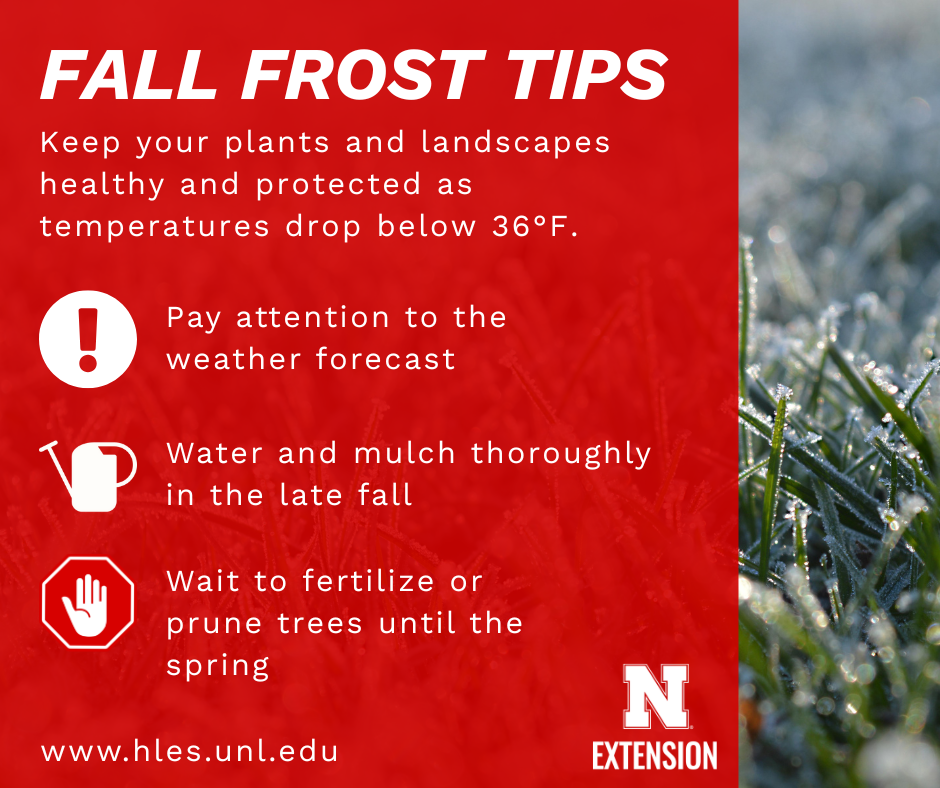
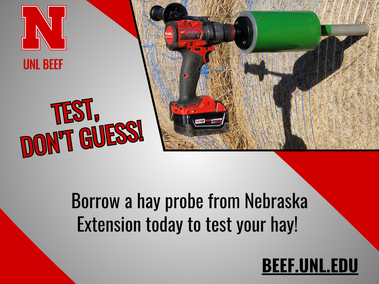
- Cold stress increases the cow’s energy needs, and without sufficient energy intake, this can lead to weight loss and decreased body condition. Learn more about managing cows through cold stress at https://beef.unl.edu/beefwatch/2024/winterizing-your-cowherd-managing-cows-through-cold-stress/.

Do you have any thin cows? Ninety days before calving is the last opportunity to put condition on cows economically. Visit https://beef.unl.edu/beefwatch/2022/cow-nutrition-considerations-calving-and-early-lactation/ for cow nutrition considerations during late gestation and early lactation.

When evaluating feed options, consider using the Feed Cost Cow-Q-Lator, an Excel worksheet designed to compare the true feeding costs of various feeds on a protein and energy basis. Download the Feed Cost Cow-Q-Lator and other decision support tools at https://cap.unl.edu/livestock/tools/.
Food Safety
Sharing Christmas Cookies
Holiday baking is a fun way to bring family and friends together, but don’t forget about food safety! 🍪🎄 Start with clean surfaces, wash your hands, and follow these simple tips to keep your baked goods safe for everyone to enjoy. Learn more: https://go.unl.edu/giving-food #UNLFoodSafety

Holiday Food Safety
Don’t let a foodborne illness ruin your festivities. Whether celebrating at home or away, check out these tips to keep your holiday season a healthy one! https://go.unl.edu/holiday-foods #UNLFoodSafety
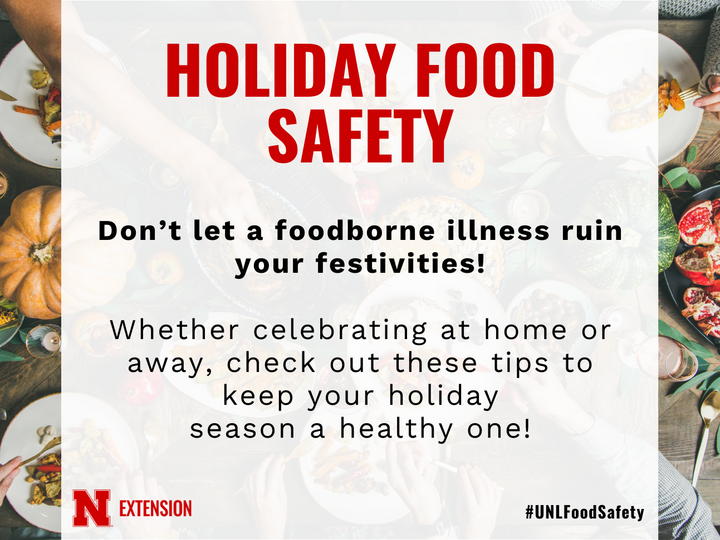
Charcuterie Board Food Safety
Building the perfect charcuterie board? 🧀🍇 Make food safety part of the recipe! Learn how to keep your party trays safe and delicious: https://food.unl.edu/article/charcuterie-boards-and-food-safety #UNLFoodSafety

Seguridad Alimentaria Durante Las Fiestas
No permitas que una enfermedad transmitida por alimentos arruine tus festividades. Ya sea celebrando en casa o fuera, consulta estos consejos para mantenerte saludable esta temporada navideña: https://go.unl.edu/holiday-foods #UNLFoodSafety

Haskell Happenings
Haskell Happenings Newsletter
Stay up to date with what's happening at the Haskell Ag Lab by subscribing to our e-newsletter!
Find our latest edition here: https://hal.unl.edu/haskell-happenings-newsletter/
